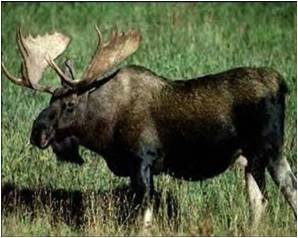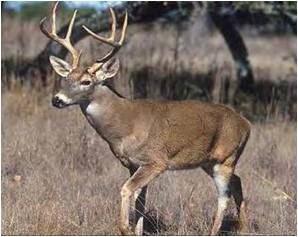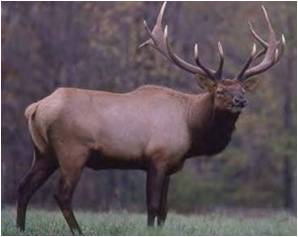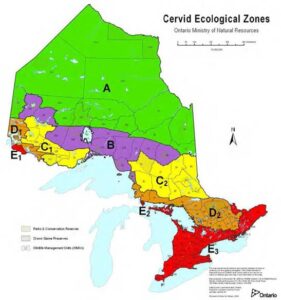Written by: Arhona Bhadra
Cervid is the term used for describing members of the deer family. Ontario is home to mainly four wild cervid species – moose, white-tailed deer, woodland caribou and American elk. They symbolize wilderness and are a critical constituent of Ontario’s biodiversity and wildlife heritage.
What are the cervid species found in Ontario?

- Moose (Alces alces): Ontario’s moose program is focused on the management of moose populations in sustainable ecosystems. This also benefits the people of Ontario ecologically, culturally, economically and socially.

- White-tailed deer (Odocoileus virginianus): Ontario’s white-tailed deer program is focused on the management of white-tailed deer populations in sustainable ecosystems, and social concerns such as human-deer conflicts. This also benefits the people of Ontario ecologically, culturally, economically and socially.

- Woodland caribou (Rangifer tarandus caribou): Ontario houses two subspecies of woodland caribou namely forest-dwelling ecotype and forest-tundra ecotype. The Endangered Species Act, 2007 protects woodland caribou as it is categorized as a ‘threatened’ species at risk. Ontario’s woodland caribou program is focused on the management of sustainable woodland caribou populations and their ecosystem, and the minimization of stressors. The Caribou Conservation Plan also develops provincial policies for the recovery and the conservation of caribou and their habitat.

- American elk (Cervus elaphus): Ontario’s elk program is focused on the management of American elk populations in sustainable ecosystems, and opportunities for recreation and tourism from elk. This would be useful for managing land uses and also for benefitting the people of Ontario ecologically, culturally, economically and socially. The Cervid Ecological Framework develops the first step towards advanced elk management planning.
What are the goals of Ontario’s cervid management program?
The cervid management program primarily focuses on:
- Protecting the genetic, species and ecosystem diversity of Ontario
- Using and sustainably developing the biological assets of Ontario and capturing benefits from such use for people of Ontario
This program is based on the Fish and Wildlife Conservation Act, 1997, the Endangered Species Act, 2007, the Crown Forest Sustainability Act, 1994, the Environmental Assessment Act, 1990, the Provincial Parks and Conservation Reserves Act, 2006, and the Planning Act, 1990 (through the Provincial Policy Statement).
What are some of the principles followed by Ontario’s cervid management program?
The guidelines developed by the Ontario’s Ministry of Natural Resources (OMNR) are as follows:
- Intrinsic value – All the four cervid species have intrinsic value within their ecosystems, while benefiting the people of Ontario.
- Adaptive management – An adaptive management approach will be implemented to continually evaluate and improve the policy guidance based on new information. Regular review of the Cervid Ecological Framework will be carried out in order to ensure that the guidance remains current and meaningful.
- Science and knowledge management – The best available scientific information (e.g., inventory, monitoring, research, and expert knowledge), community knowledge, and Aboriginal traditional knowledge will be referenced for cervid management.
- Aboriginal treaty rights – Aboriginal peoples’ perspectives and insights, traditional knowledge and practices related to Ontario’s cervids will be taken into account, while constitutionally protecting the Aboriginal treaty rights.
- Landscape and ecologically-based wildlife management – A landscape and ecologically-based approach to wildlife management is the key to the conservation of biodiversity and the sustainable use of natural resources. Cervids will only be managed within appropriate landscape scales in an ecosystem perspective. The predator-prey balance and their ecological relationships will be taken into consideration as they are an important factor in cervid management.
- Risk-based approach for species management – Due to availability of multiple cervid species, species resilience, reproductive potential, conservation status, and responsiveness will be considered more in this risk-based approach. For example, species with the highest risks may be given management priority over those of lower risk in a given area. However, specific local management objectives will vary the scale of implementation.
- Enabling and flexible for local considerations – Local management decisions will address local circumstances and needs through an enabling and flexible approach. But the broader landscape-based cervid management approach will still continue to receive contributions. Wildlife Management Units (WMUs) is the current foundation for cervid allocation. Collaborations among WMUs might improve management and/or allocation decisions in some scenarios.
- Integrating management – Cervid management constitutes management of both populations and habitat. Management of cervid population and habitat will be integrated through existing policies, land and resource management planning processes. However, actions taken for the management of one species may impact that of another species or habitat.
- Balance – All the ecological, social and economic factors Cervid management will be integrated and balanced within the context of ecological sustainability.
- Transparency – Interested public, Aboriginal communities and stakeholders will collaborate together to develop cervid management approaches.
Are there some other guidelines too?
There are Cervid Ecological Zones (CEZs), as depicted below, in order to establish broad population and habitat management guidance. These serve as management division plans for the overarching cervid management intent at the landscape level.

The following table has been developed for the broad cervid management guidance based on the Cervid Ecological Zones:

Conclusion:
The cervid population is one of many endangered families. The cervid population is decreasing all over the world. The International Union for Conservation of Nature (IUCN)’s Red List of Threatened Species contains 55 species of Cervidae, 2 of which are “extinct”, 1 is “critically endangered”, 8 are “endangered”, 16 are “vulnerable”, and 17 are categorized as “least concern”. The remaining 10 species are “data deficient”. Thus we should make our hardest efforts, not only to protect the cervid population, but to protect our Mother Earth from the lack of biodiversity.
To learn more about Ontario’s cervid ecological management, read the Cervid Ecological Framework developed by the OMNR. The document explains the strategic decision-making about Ontario’s cervid management in detail.
References:

